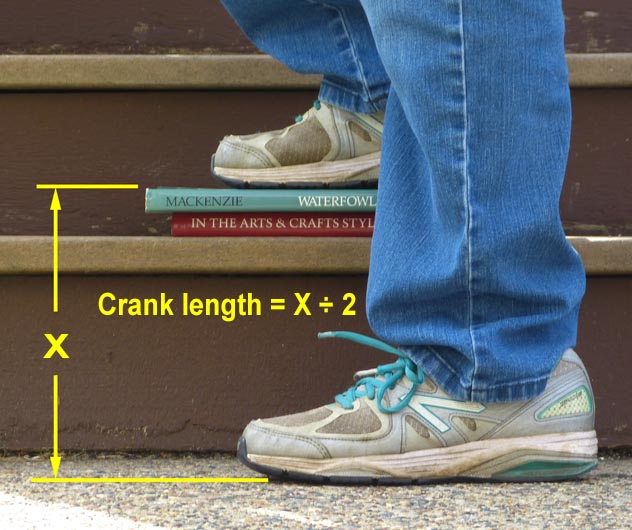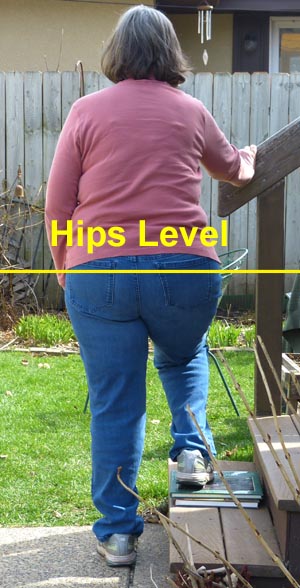
Crank
Length for
Range of Motion Limitations
People with range of motion limits often contact me looking for one
very short crankarm and one standard length arm. Usually at the
advice of their bike shop, doctor or physical therepist.
However, this advice is almost always wrong.
If RoM limits on flexion are the only reason for shorter
cranks, and both legs are the same length, both arms should be the
same length. If you can get over the top comfortably with a 120
while pedaling a 170 on the other side, you could also do so with
two 145s and be able to use the strength you have in both legs.
(120+170)/2 = 145 Of course this means the seat to
bottom bracket distance will have to be increased.
We are looking for optimum extension on both legs. Because
the more time spent with less bend in the knee the more power you
will get. And, it's best to exercise the limited leg through the
full range of motion it does have.
Here is a simple method that has been proven to give a good length
for dozens of people with RoM limits
- Make
a stack of boards, books or whatever will allow you to vary the
height of the stack.
(Starting the stack on a stair tread or sturdy box
may simplify this.)
- Try
to stand flat footed, pelvis level side to side, with your bad
leg on the stack and your good leg on the floor.
If you can do so comfortably, add a magazine, book or
board. If not remove one.
Keep adjusting till you get a maximum comfortable height,
without tilting your pelvis so that one hip socket is higher
than the other.
- The
height of the stack is the total length of both cranks.
- If
leg lengths are equal and the range of motion limit is only on
bending, then just divide by 2.
- So.
if the tallest stack you can stand on comfortably is 290mm
you should be able to
pedal 145mm cranks etc.
- If
leg lengths aren't equal and/or there are ROM limits on
extension, contact me and we'll sort out what you need.


Most Range of Motion
limitations can be addressed by simply going to Shorter
Cranks. But when
RoM is severely limited, sometimes combined with leg
length differences, I make one crankarm very short and
add a T-Cycle
Pedal Swing.
Scar
Tissue
If your RoM limits are due to scar tissue, riding may
gradually improve your RoM. One gent got the wrong treatment for a
knee injury, leading to much inflammation and an infection which
left him with a lot of scar tissue. He started out at 120mm, but
pedaling gradually broke up the scar tissue. So every 6 months
he ordered another set, 5mm longer. (He could afford to, but 10mm
increments should be fine.) Eventually he was able to buy the normal
165mm cranks that bike shops carry.
Power
Don't worry about losing power on the good side, due to shorter
cranks. Unless one leg is just along for the ride, the increase in
output on the limited leg will more than make up for any slight
reduction on the other.
My fastest triathlete is 5'-7" won the 2011 Western Australia
Ironman on 145s. The people at PowerCranks are convinced most
average sized men should be on 145s.
A 24 hour MTB race in Australia was won on 125s. The shortest guy on
the team was 5'-10". With the shorter cranks they rarely had to
stand. conserving energy. And they were able to get by with a single
chainring because the useful RPM range is so wide with shorties.
I have one customer, 6'-2" (188cm) tall, with range of motion
issues, competing in long distance Brevets on 95mm cranks. Another
gent with range of motion limits is climbing the hills of San
Francisco with a single 38t chainring and a 12-25 cassette.
Also on 95s. Because your legs are straighter, you push harder on
the pedals, making up for lost leverage. The fellow in San Francisco
bends pedal spindles.



